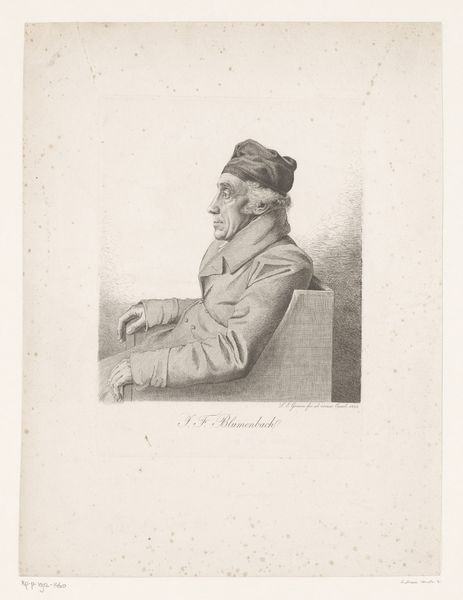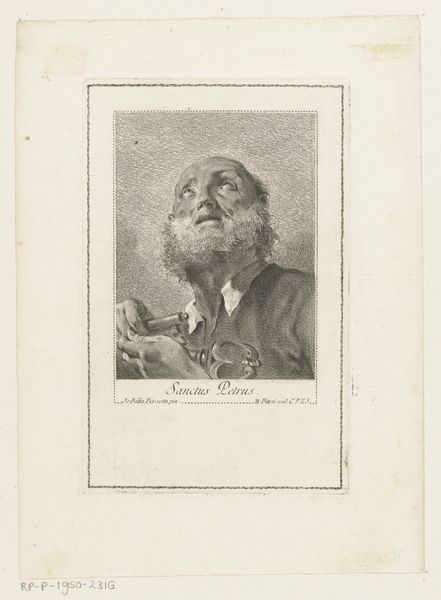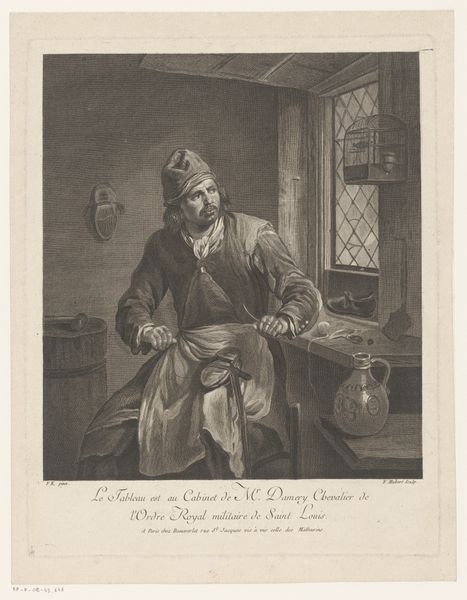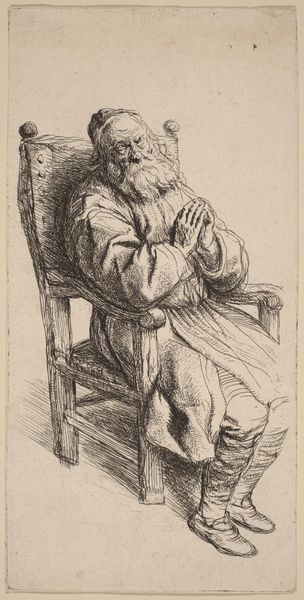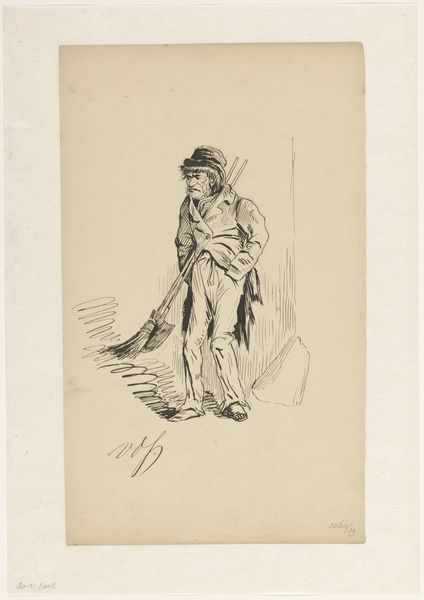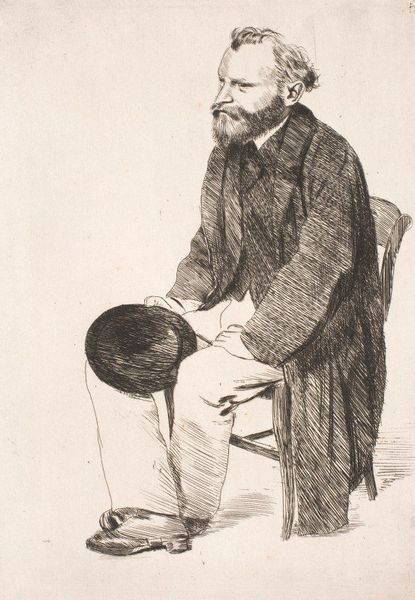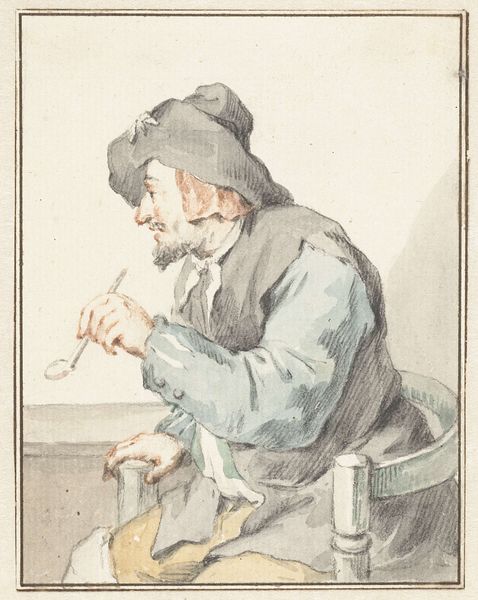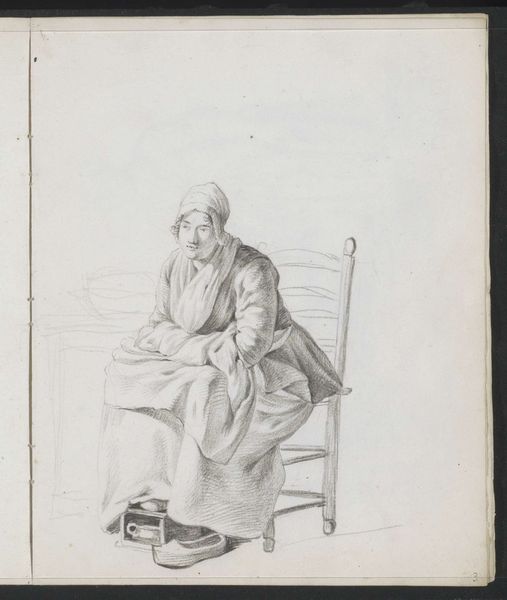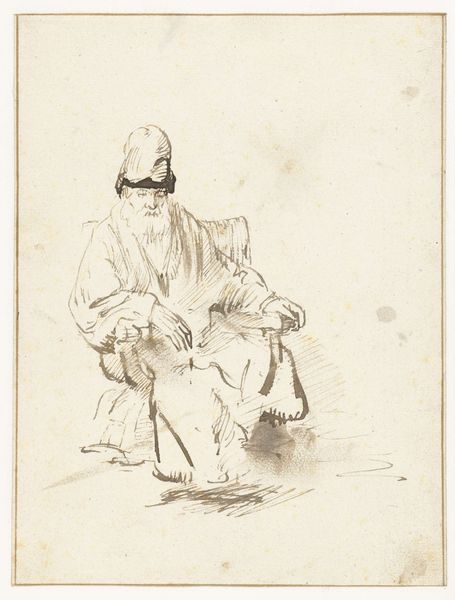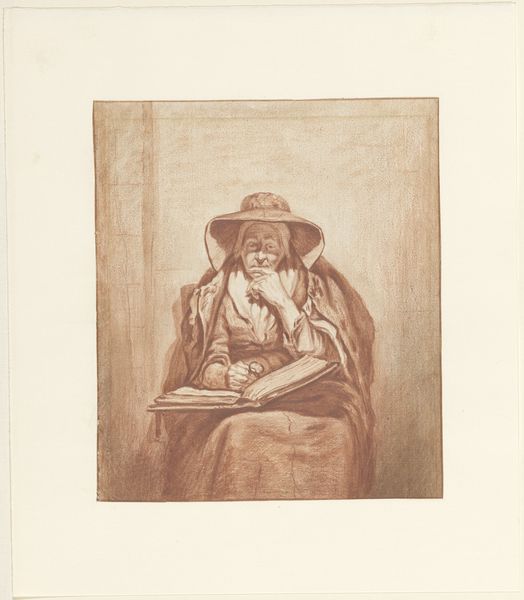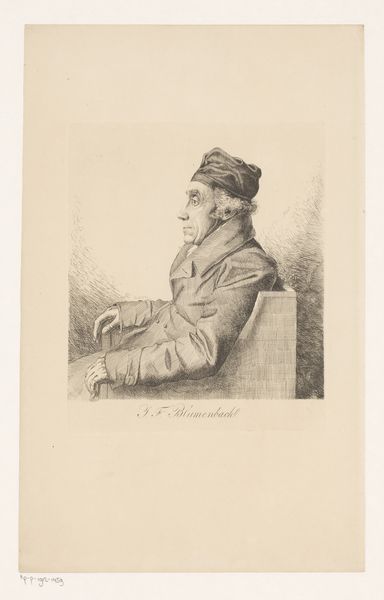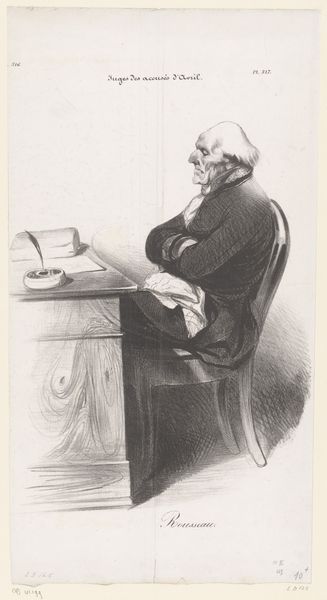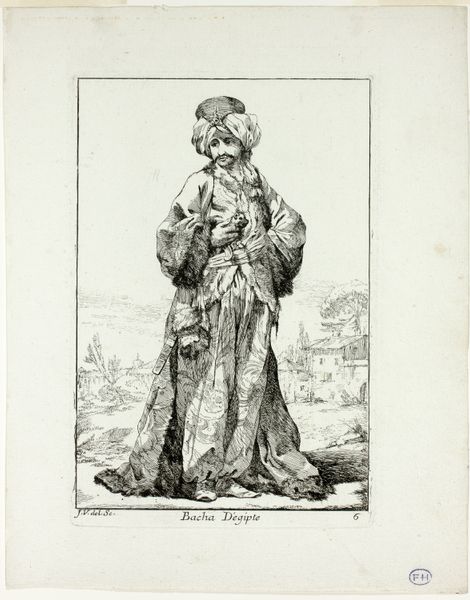
Copyright: Public Domain: Artvee
Curator: This drawing, titled "Vanity Fair Men of the Day, No. 33, Natural Selection," was created by James Tissot in 1871 using pen and ink. It depicts Charles Darwin as a caricature. What immediately strikes you about the piece? Editor: Well, aside from the rather exaggerated features which make it a clear caricature, I notice the contrast in textures, particularly in Darwin’s beard compared to the smooth fabric of his coat. What do you see in it? Curator: What's crucial to understand is how this image functions within its original context, which is the print run of Vanity Fair magazine. This wasn't a precious object for a gallery; it was mass-produced, circulated, consumed, and then likely discarded. Consider the means of its production—lithography—allowing for widespread distribution to a growing literate public, shaping perceptions of Darwin and his theories. How does thinking about the materiality and consumption of this print change your perspective? Editor: That’s a good point. Thinking of it as something disposable kind of changes the tone of the caricature. If it were a precious object, the caricature might be seen as malicious, but because it was printed in a magazine it makes it more playful or at least satirical. Was this image challenging ideas of ‘high art’? Curator: Precisely. It complicates the notion of high art by blending portraiture, caricature, and mass media. Tissot was, after all, a very well-known artist doing a drawing for a publication with pretty wide distribution, and it challenged traditional portraiture by democratizing representation. This caricature then is available for popular consumption in a time where ideas about class and culture are being challenged in England. Editor: That’s fascinating. Considering the process of creation and its distribution really puts a new spin on my understanding. It wasn't just about representing Darwin, it was about circulating ideas and constructing public image. Curator: Exactly, by questioning the artwork in its social, political, and economic framework we see its complexity and intention as an artifact.
Comments
No comments
Be the first to comment and join the conversation on the ultimate creative platform.

